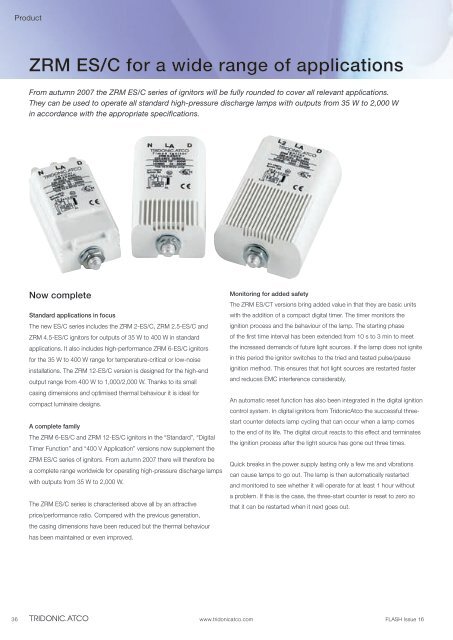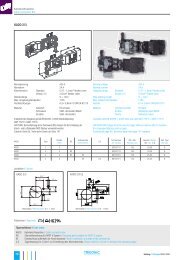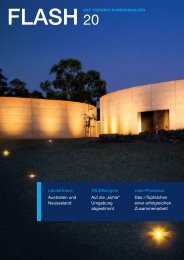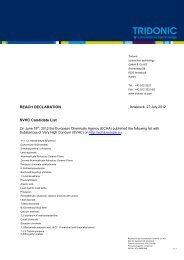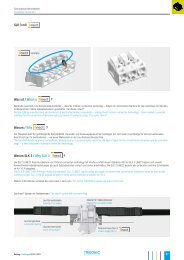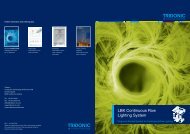FLASH issue 16 - Tridonic connection technology
FLASH issue 16 - Tridonic connection technology
FLASH issue 16 - Tridonic connection technology
You also want an ePaper? Increase the reach of your titles
YUMPU automatically turns print PDFs into web optimized ePapers that Google loves.
Product<br />
ZRM ES/C for a wide range of applications<br />
From autumn 2007 the ZRM ES/C series of ignitors will be fully rounded to cover all relevant applications.<br />
They can be used to operate all standard high-pressure discharge lamps with outputs from 35 W to 2,000 W<br />
in accordance with the appropriate specifications.<br />
Now complete<br />
Standard applications in focus<br />
The new ES/C series includes the ZRM 2-ES/C, ZRM 2.5-ES/C and<br />
ZRM 4.5-ES/C ignitors for outputs of 35 W to 400 W in standard<br />
applications. It also includes high-performance ZRM 6-ES/C ignitors<br />
for the 35 W to 400 W range for temperature-critical or low-noise<br />
installations. The ZRM 12-ES/C version is designed for the high-end<br />
output range from 400 W to 1,000/2,000 W. Thanks to its small<br />
casing dimensions and optimised thermal behaviour it is ideal for<br />
compact luminaire designs.<br />
A complete family<br />
The ZRM 6-ES/C and ZRM 12-ES/C ignitors in the “Standard”, “Digital<br />
Timer Function” and “400 V Application” versions now supplement the<br />
ZRM ES/C series of ignitors. From autumn 2007 there will therefore be<br />
a complete range worldwide for operating high-pressure discharge lamps<br />
with outputs from 35 W to 2,000 W.<br />
The ZRM ES/C series is characterised above all by an attractive<br />
price/performance ratio. Compared with the previous generation,<br />
the casing dimensions have been reduced but the thermal behaviour<br />
has been maintained or even improved.<br />
Monitoring for added safety<br />
The ZRM ES/CT versions bring added value in that they are basic units<br />
with the addition of a compact digital timer. The timer monitors the<br />
ignition process and the behaviour of the lamp. The starting phase<br />
of the first time interval has been extended from 10 s to 3 min to meet<br />
the increased demands of future light sources. If the lamp does not ignite<br />
in this period the ignitor switches to the tried and tested pulse/pause<br />
ignition method. This ensures that hot light sources are restarted faster<br />
and reduces EMC interference considerably.<br />
An automatic reset function has also been integrated in the digital ignition<br />
control system. In digital ignitors from <strong>Tridonic</strong>Atco the successful threestart<br />
counter detects lamp cycling that can occur when a lamp comes<br />
to the end of its life. The digital circuit reacts to this effect and terminates<br />
the ignition process after the light source has gone out three times.<br />
Quick breaks in the power supply lasting only a few ms and vibrations<br />
can cause lamps to go out. The lamp is then automatically restarted<br />
and monitored to see whether it will operate for at least 1 hour without<br />
a problem. If this is the case, the three-start counter is reset to zero so<br />
that it can be restarted when it next goes out.<br />
36 www.tridonicatco.com <strong>FLASH</strong> Issue <strong>16</strong>


